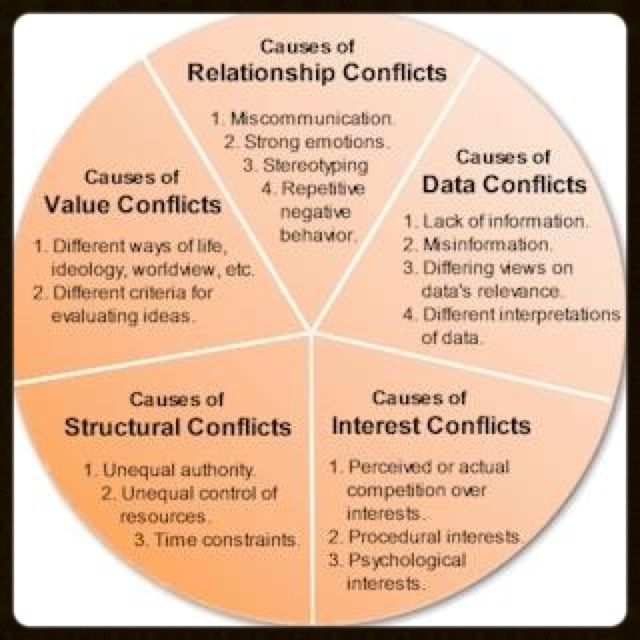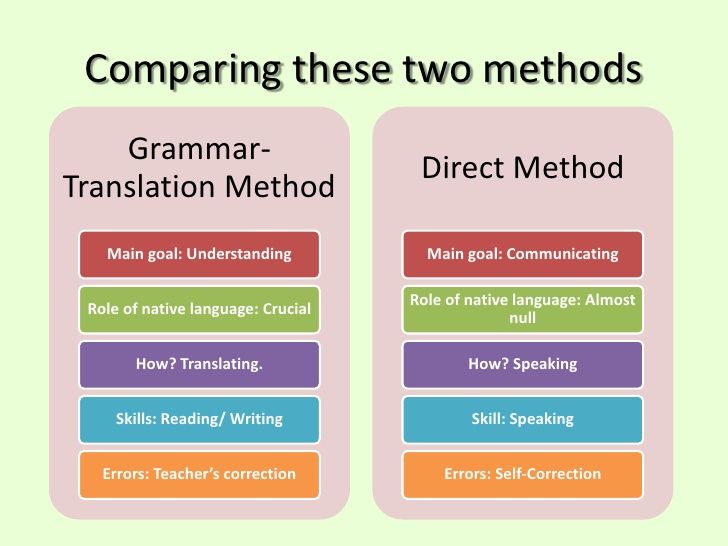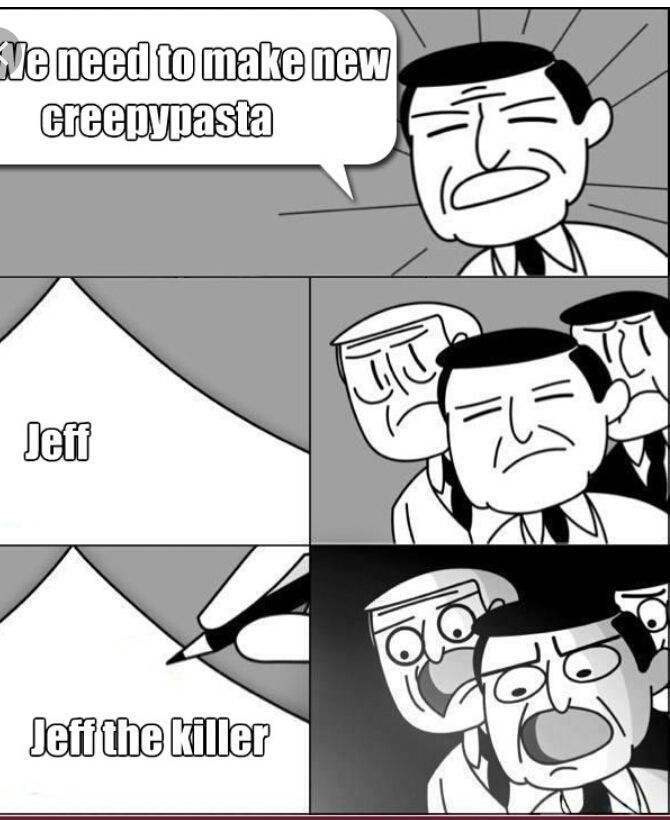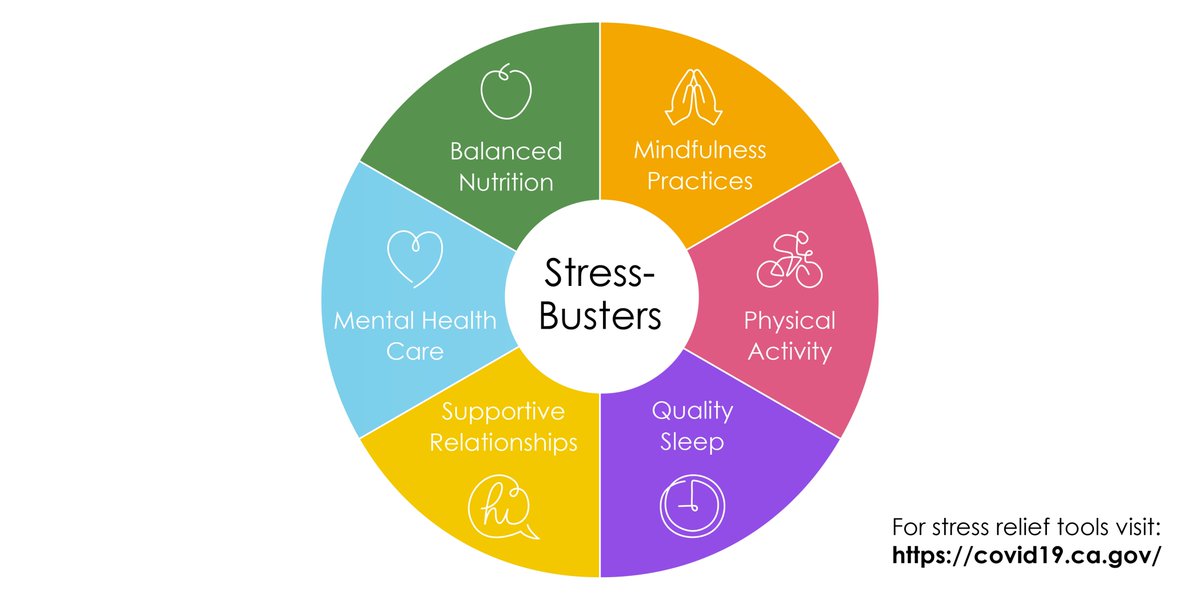3 helpful conflict resolution strategies for couples
5 Conflict Resolution Tips for Couples
Marriage and Family Therapy professionals like those educated at NCU work with families and couples to help them navigate a wide range of behavioral and relationship problems. Quite often, couples from all walks of life experience problems that can be solved using certain techniques. However, if couples aren't sure where to begin the process, the miscommunication can lead to a breakup or divorce.
According to a recent article in the Washington Post, nearly 70% of heterosexual couples (unmarried) break up within the first year. For married couples, it's estimated that first marriages have a 41% chance of ending in divorce, with subsequent marriages having a higher chance of failure. With these statistics in mind, finding common ground and developing healthy conflict management skills is more important than ever. Of course, there are no quick fixes when it comes to building a life with someone and working through issues, but there are options that can provide relief when relationships become toxic.
To give you an idea of what kinds of tactics couples can use to make progress, here are 5 conflict resolution tips that can make a meaningful difference:
1. Directly Express Your Problems
Couples who are having issues may resort to a behavior that avoids the problem itself. For example, a partner who acts depressed or sad may use that as an expression, instead of directly stating their concern. The same thing applies to a partner who retaliates with anger or annoyance; their response side-steps the problem at hand, creating more confusion for both parties. In order to find a resolution, couples must directly express what's bothering them in a firm and honest matter. Once the issue is out in the open, a real plan of action can be put into place.
Related Article: The Dangers of Social Media on Marriage and Family
2. Don't Blame Your Partner
Putting the blame on someone for a problem that both people are experiencing never leads to a viable solution.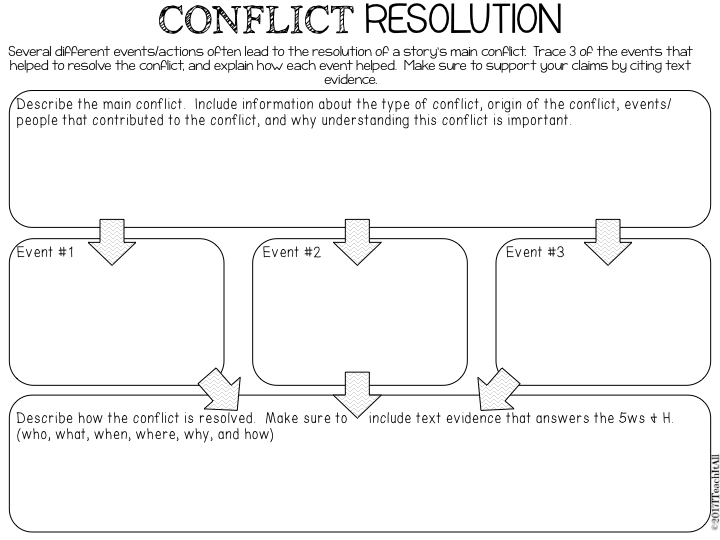 Instead, the one taking the blame will feel attacked, forcing them to respond to the blame, rather than the problem at hand. A scenario that explains this pitfall is when a partner says, "You're crazy for thinking that!" Immediately, the blame is shifted away from the issue, which could be the fear of being cheated on, and now the other partner will go on the defensive: "I'm crazy? You're the one who's crazy!" Note that the original problem has now become secondary to the blame. To avoid this pattern, it's better to respond with "I feel" statements that keep the main point at the center of the discussion. By saying, "I feel that you're being crazy to think that I would cheat on you," removes the blame from the partner, while keeping the heart of the argument intact. This approach will lead to a better communication that honors the feelings of each partner without putting them down.
Instead, the one taking the blame will feel attacked, forcing them to respond to the blame, rather than the problem at hand. A scenario that explains this pitfall is when a partner says, "You're crazy for thinking that!" Immediately, the blame is shifted away from the issue, which could be the fear of being cheated on, and now the other partner will go on the defensive: "I'm crazy? You're the one who's crazy!" Note that the original problem has now become secondary to the blame. To avoid this pattern, it's better to respond with "I feel" statements that keep the main point at the center of the discussion. By saying, "I feel that you're being crazy to think that I would cheat on you," removes the blame from the partner, while keeping the heart of the argument intact. This approach will lead to a better communication that honors the feelings of each partner without putting them down.
3. Stick to One Argument at a Time
In addition to removing blame, it's important to maintain one argument at a time. Unfortunately, when couples fight, it's easy to start lumping together multiple issues into one massive blowout. When this happens, the ability to solve one problem gets lost in the shuffle of trying to solve many problems, which in turn causes an argument to go nowhere. Couples who can stick to one argument have a much better chance of finding one solution. This approach allows for an attitude of patience and understanding, giving each partner the time to process their feelings and come up with the right answers together before moving onto to something else.
Unfortunately, when couples fight, it's easy to start lumping together multiple issues into one massive blowout. When this happens, the ability to solve one problem gets lost in the shuffle of trying to solve many problems, which in turn causes an argument to go nowhere. Couples who can stick to one argument have a much better chance of finding one solution. This approach allows for an attitude of patience and understanding, giving each partner the time to process their feelings and come up with the right answers together before moving onto to something else.
4. Communication is Key
It may sound like a broken record, but healthy communication between partners is the bedrock of any successful relationship. Within this idea lies an umbrella of listening and response skills that provide guidance for couples when arguments start to ensue or differences begin to surface. For example, one must really pay attention to the issues or feelings that their partner is sharing.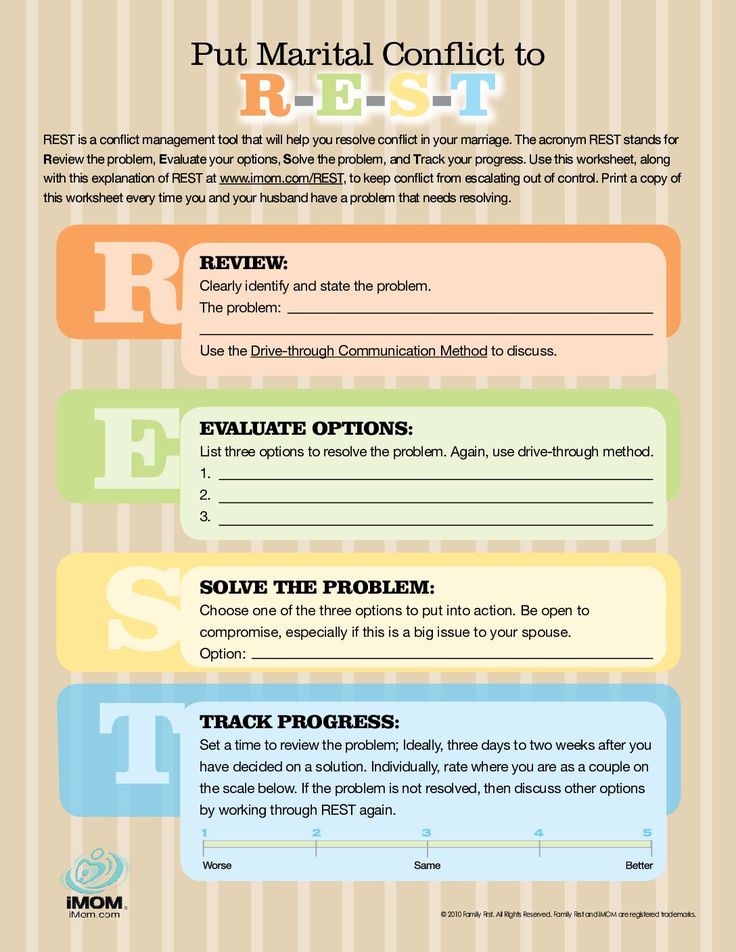 This form of listening can be followed up with questions or personal identifiers to make sure that one is understanding what is being said. If a partner is laid back in their reciprocity or preoccupied with other matters, the overall communication will never develop into something beneficial. Using a form of active listening and perception checks will eliminate misunderstandings and provide a strong foundation for alleviating future conflicts.
This form of listening can be followed up with questions or personal identifiers to make sure that one is understanding what is being said. If a partner is laid back in their reciprocity or preoccupied with other matters, the overall communication will never develop into something beneficial. Using a form of active listening and perception checks will eliminate misunderstandings and provide a strong foundation for alleviating future conflicts.
5. Be Open Minded
Finally, couples who can remain open minded throughout their issues are more likely to find peaceful resolutions that serve the interests of both parties. Getting caught up on one side of the argument doesn't allow for any flexibility with understanding the other's concerns, so as a conflict grows, the odds of meeting in the middle are highly diminished. To combat this dysfunction, partners must learn to rationalize an argument from an objective standpoint. They must remove their ego and consider both sides of the coin without bias or personal gain.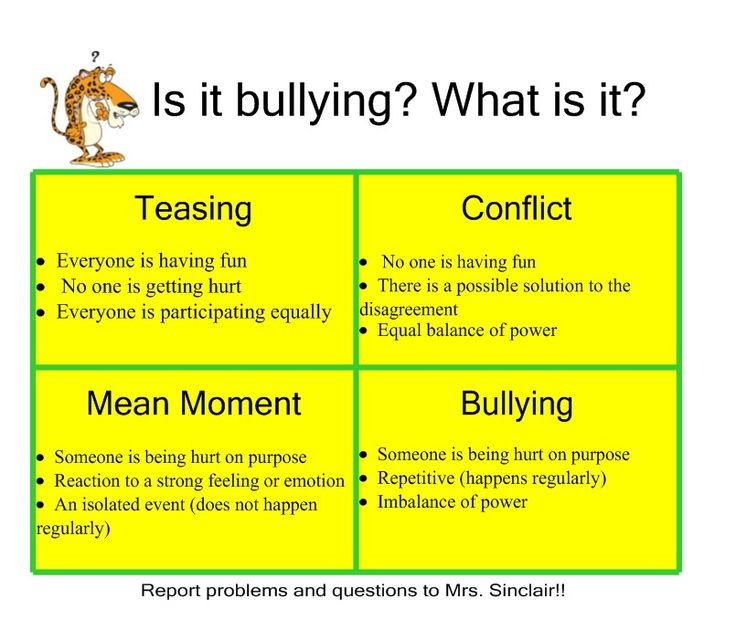 Operating within this mode will allow for a reasonable discussion, as well as having the openness to accept the other partner's standpoint. When couples can be open-minded and objective, they are well-suited to handle a variety of issues.
Operating within this mode will allow for a reasonable discussion, as well as having the openness to accept the other partner's standpoint. When couples can be open-minded and objective, they are well-suited to handle a variety of issues.
NCU Believes Counseling Can Make a Difference
Whether it’s a couple just starting out or a marriage well into its prime, counseling services that offer conflict resolution management can lead to extraordinary breakthroughs. NCU is a firm believer in the benefits that counselors can offer to their communities, and their Marriage and Family Therapy program (MFT) is the perfect way to gain industry-knowledge, while preparing you for practice.
The online MFT program gives you an in-depth perspective to help others navigate their life challenges and personal struggles. Through interactive programs, case studies, and quality training experiences, you'll develop a wealth of thinking and research skills that you can extend to your clients, ultimately helping them lead better lives.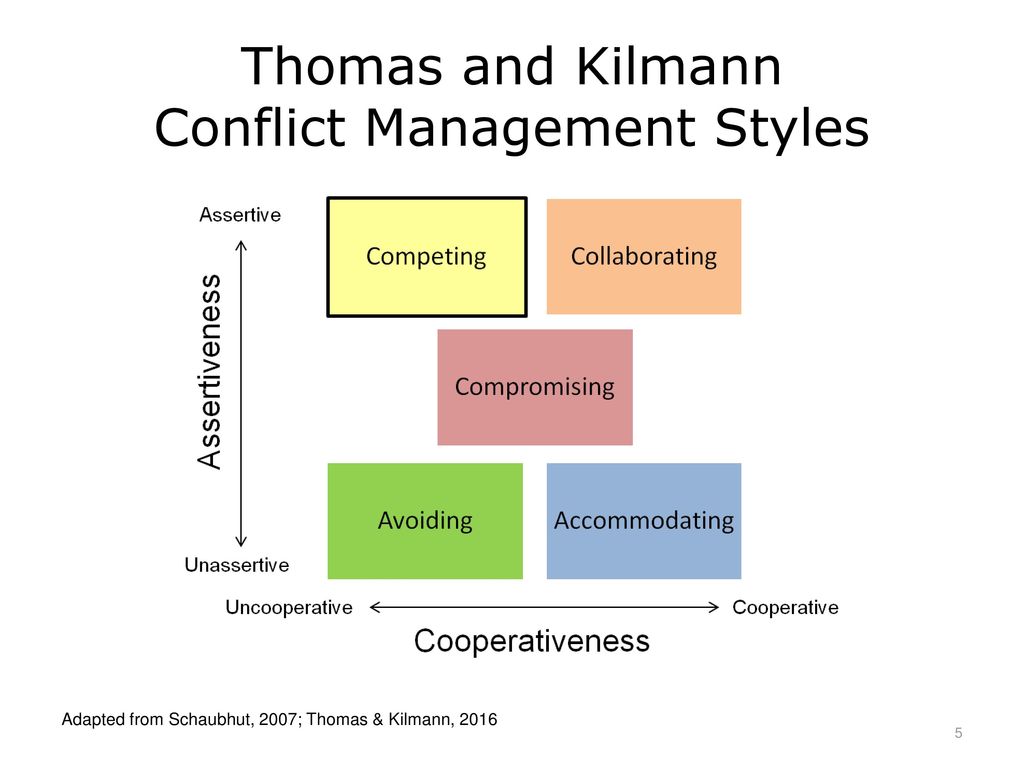 Plus, NCU offers the first distance-based program to receive certification from the Commission on Accreditation for Marriage and Family Therapy Education (COAMFTE), which means you can trust that your education is comprised of the latest techniques and practices.
Plus, NCU offers the first distance-based program to receive certification from the Commission on Accreditation for Marriage and Family Therapy Education (COAMFTE), which means you can trust that your education is comprised of the latest techniques and practices.
To learn more about NCU and their MFT programs, please call us at 866-776-0331 or fill out the online form below to request for more information.
Tags
Therapy couples marriage and family therapy department of marriage and family therapyConflict Resolution in Relationships & Couples: 5 Strategies
Conflicting goals, motives, and needs can cause stress in any relationship, particularly a romantic one.
While conflict is not uncommon, if left unresolved along with related stress, it can damage the bonds that form between people (Overall & McNulty, 2017).
If we accept that all partners will disagree at times, we must also recognize that it is crucial to find a resolution to ensure that the relationship’s health is maintained (Grieger, 2015).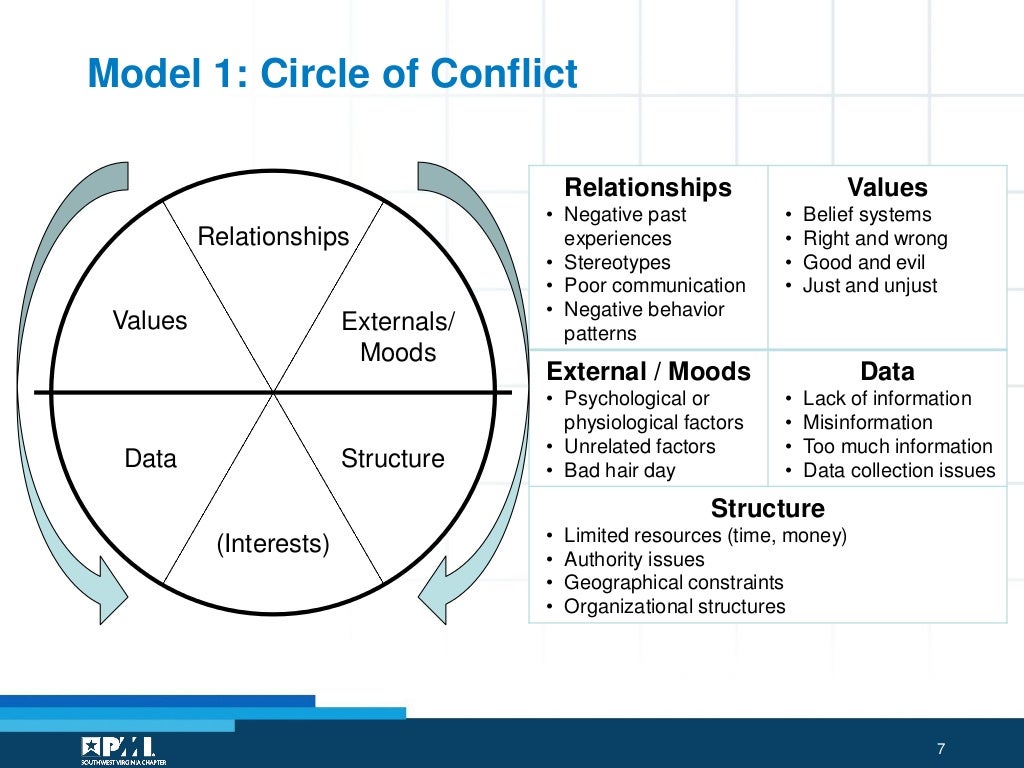
This article explores conflict and its resolution in couples and other relationships, introducing key strategies and activities to help avoid or recover from any harm done.
Before you continue, we thought you might like to download our three Positive Communication Exercises (PDF) for free. These science-based tools will help you and those you work with build better social skills and better connect with others.
This Article Contains:
- Is Conflict Resolution Important for Healthy Relationships?
- How to Resolve Conflicts in Relationships: 4 Steps
- 5 Helpful Strategies for Couples & Married People
- 5 Exercises, Activities, & Worksheets for Couples Therapy
- Resources From PositivePsychology.com
- A Take-Home Message
- References
Is Conflict Resolution Important for Healthy Relationships?
Conflict need not always lead to damage. Challenge and disagreement within a relationship (romantic or otherwise) can encourage growth, deeper understanding, improved communication, and progress toward a goal (Overall & McNulty, 2017; Tatkin, 2012).
But this is not always the case.
The most critical aspect of conflict affecting the health of a relationship is its resolution. There will always be disagreement and differences of opinion of one kind or another. However, to avoid a loss of trust, damage to intimacy, or behavior that further upsets the relationship, “the couple will want to make sure that the resolution does not leave lingering hurt or resentment in one or both of them” (Grieger, 2015, p. 161).
Clinical psychologist Russell Grieger (2015) suggests that disagreements have four possible outcomes:
- The outcome is good for the first person, but not the second.
This is a win–lose situation. One person gets what they want, while the other is left defeated, possibly feeling hurt, angry, and resentful. Such feelings may lead to further disagreements or surface in other areas of the relationship. - The outcome benefits the second person, but not the first.
This is similar to the first possible outcome, only this time it is the first person within the relationship who is left feeling thwarted or slighted (a lose–win scenario).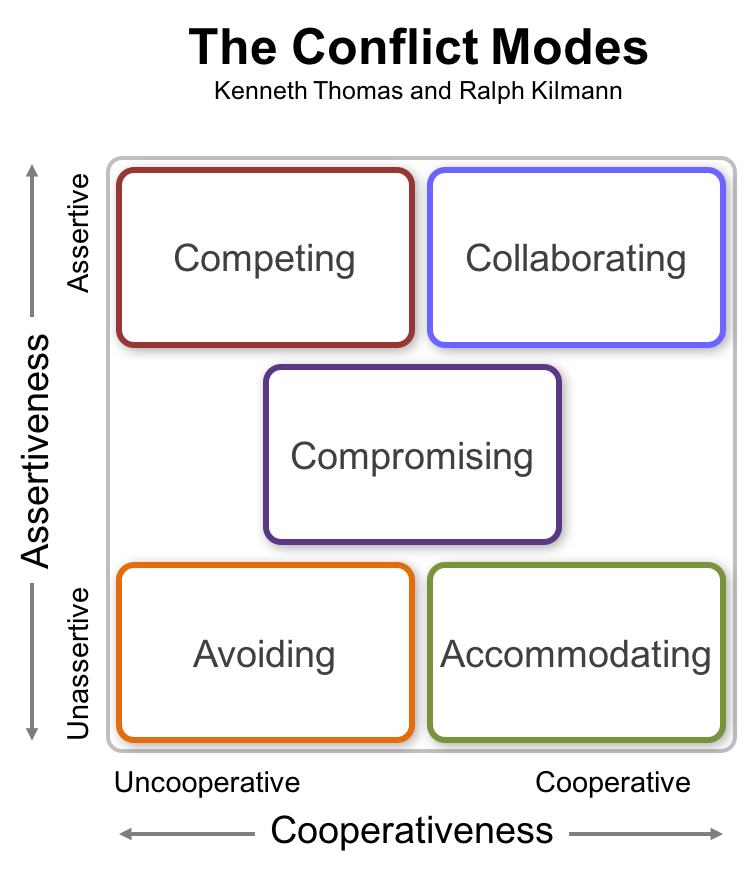
- The outcome is bad for both people.
The third option is bad for both people; they equally face loss (lose–lose). Often a result of stubbornness on both sides when neither wants the other to ‘win,’ so neither will give in. Again, this is damaging for the relationship and, if ongoing or repeated, ultimately toxic. - A resolution is found that is appropriate for both people.
The couple or partners work toward an equally beneficial resolution and achieve a win–win outcome. Neither person is left feeling defeated or damaged, leading to increased confidence and trust in the relationship.
Undoubtedly, the fourth option is the most ideal for a long-term, healthy partnership and avoids the potential for a downward spiral in the relationship (Grieger, 2015). When in response to conflict, a win–win outcome leads to growth and moving forward.
How to Resolve Conflicts in Relationships: 4 Steps
Grieger (2015) uses a simple yet effective four-step process with couples handling troublesome conflict to overcome resolute differences.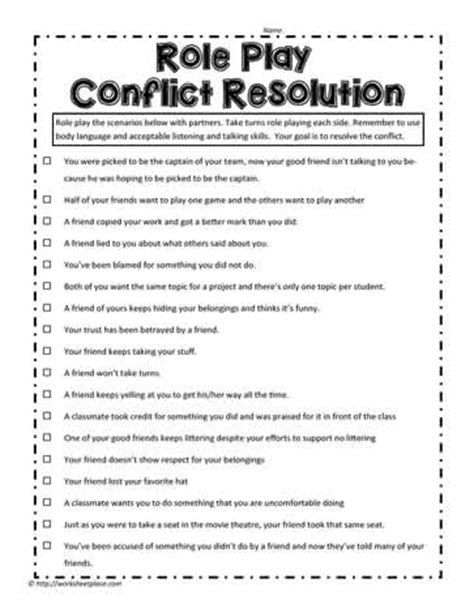
- Step 1 – Eliminate relationship disturbances
Firstly, it is vital to remove or at least reduce emotions that will get in the way of conflict resolution, such as hurt, anger, and resentment.
Otherwise, either side is unlikely to listen patiently and openly to what the other is saying.
- Step 2 – Commit to a win–win posture
Each party must commit to finding a solution that works equally for both. One side winning while the other loses is not acceptable. The couple must remain motivated and open to change. - Step 3 – Adopt purposeful listening
A win–win solution is more likely when each partner is actively listening to the other. Each individual knows what a win looks like for themselves but now must purposefully listen to the other, avoiding censorship or judgment.
Once both have a shared understanding, a win–win solution is possible.
- Step 4 – Practice synergistic brainstorming
The couple can progress toward identifying a workable resolution, having removed any emotional contamination, adopted a win–win mindset, and fully committed to a win for both.
The couple can share ideas, hopes, needs, goals, and concerns until finding a solution that satisfies both of them.
5 Helpful Strategies for Couples & Married People
Conflict can become an unhealthy habit, leading to a repeating pattern of one or both partners consistently feeling they have lost (Grieger, 2015).
It’s important to consider what brought the couple together in the first place and what they can do more or less of to show their love and understand one another better going forward.
Launching and landing rituals
Heading out to work, school, or the store is described as launching, a time when one partner leaves the relationship world for the non-relationship world (Tatkin, 2012).
Launchings and landings (returning to the relationship) can be an opportunity for conflict or the perfect chance to build healthy relationship-building habits.
Ask yourself or your client:
- Do you run out the door?
- Do you give a lingering kiss and share a moment?
- Do you return, slamming the door as you come in and ask what’s for dinner?
- Do you walk in with a smile and a funny story to tell?
What is right for one couple may not be for the next.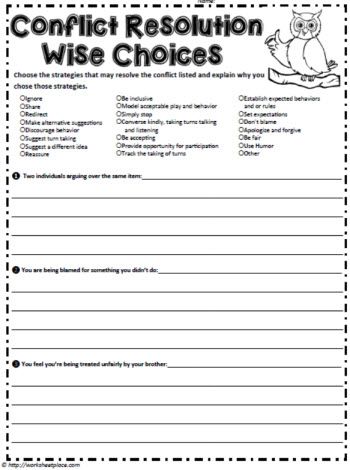 It is essential to consider the message sent by each partner’s behavior. An enjoyable farewell and return can, in time, improve connections and reduce the risk of conflict.
It is essential to consider the message sent by each partner’s behavior. An enjoyable farewell and return can, in time, improve connections and reduce the risk of conflict.
Blueprint for love
Caddell (2013) describes the importance of building a blueprint for love. Conflict often arises from misunderstandings or a failure to consider the other’s needs and wishes.
Understanding what a loving relationship looks like to your partner may make it easier to recognize what upsets or frustrates them.
Use the Blueprint for Love worksheet to reflect on how a relationship’s blueprint for love might look.
The exercise begins by asking the client to think of a couple from their past who had a loving relationship. It may be their parents, or they can choose two other people who showed love, acceptance, and caring for one another. Then the person considers what they are looking for in a relationship.
Nothing swept under the rug
Conflict is often unavoidable and sometimes outside of our control.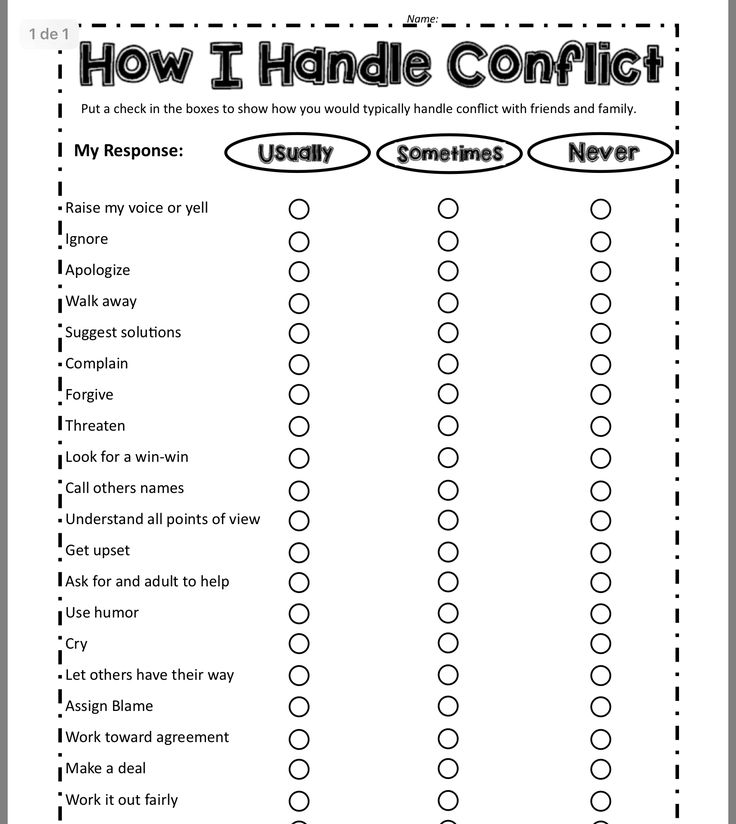 However, how we respond to disagreements, harsh words, and arguments is.
However, how we respond to disagreements, harsh words, and arguments is.
Tatkin (2012, p. 155) suggests couples should adopt the “policy never to avoid anything, no matter how difficult.” Not leaving things to fester and returning at a later date requires paying attention to one another and recognizing what is sensitive for the other person.
Aim to discuss and agree on a mutually beneficial outcome as soon as possible after an issue occurs. If that’s not possible, then agree when it can be discussed.
Revisiting the past
Sometimes couples forget what they saw in each other when they first met. Instead, they become wrapped up in repeating patterns of arguing, disagreements, and conflict.
Revisiting the past can serve as a helpful reminder of what is good about a couple and review why they are together (Williams, 2012).
Ask the couple to consider and discuss the following relationship therapy questions:
- What made you fall in love with each other?
- What were your early years like together?
- How were things better then?
- How are things better now?
- How do you currently show your partner that you care?
- What does your partner do that makes you feel loved?
- What caring behaviors can you do more of or start?
Focus on good communication
Clear, open, and complete dialogue is crucial to a successful relationship and reducing conflict.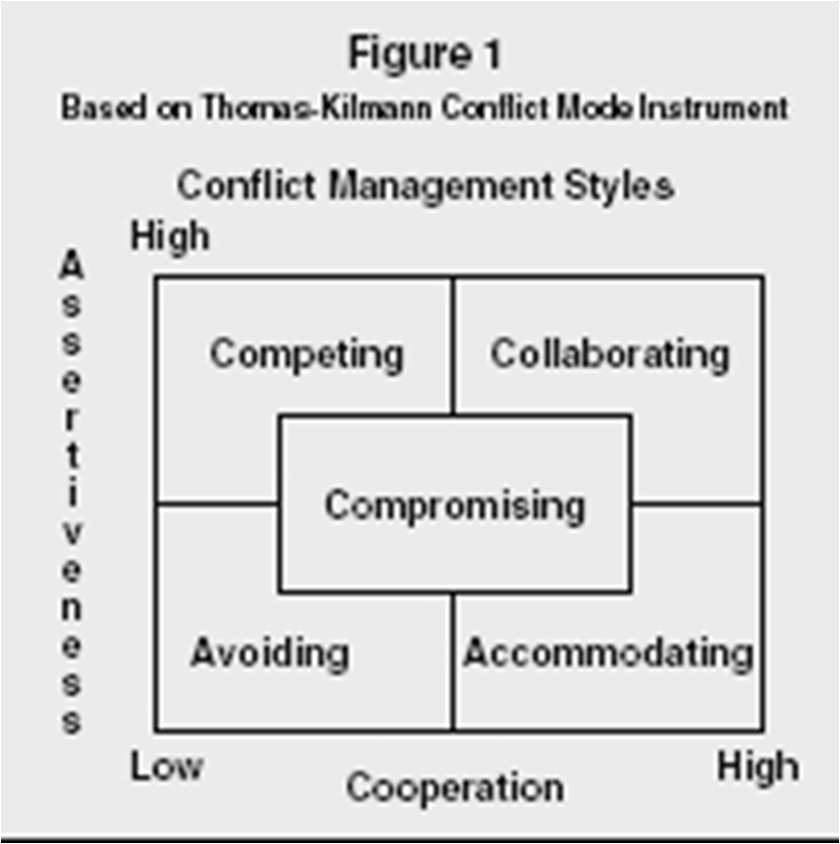 Sharing and understanding are best achieved when we are not projecting our own beliefs about a partner or what they are going to say but genuinely paying attention to verbal and nonverbal behavior (Hannah, Luquet, Hendrix, Hunt, & Mason, 2005).
Sharing and understanding are best achieved when we are not projecting our own beliefs about a partner or what they are going to say but genuinely paying attention to verbal and nonverbal behavior (Hannah, Luquet, Hendrix, Hunt, & Mason, 2005).
Effective listening takes practice. Focus on your partner, what they have to say, and how they act; do not divide attention by looking at your phone or people passing by. Hear what they are saying and how they say it, rather than attending to your own thoughts. And crucially, be comfortable with moments of silence and practice nonjudgment.
5 Exercises, Activities, & Worksheets for Couples Therapy
We often attempt to avoid or reduce conflict at all costs.
Yet this can lead to any resolution being preferable to none due to the fear or discomfort of conflict.
To break out of the lose–win, win–lose, or lose–lose pattern often experienced in a relationship, each partnership must find their own path to achieving a win–win outcome (Grieger, 2015).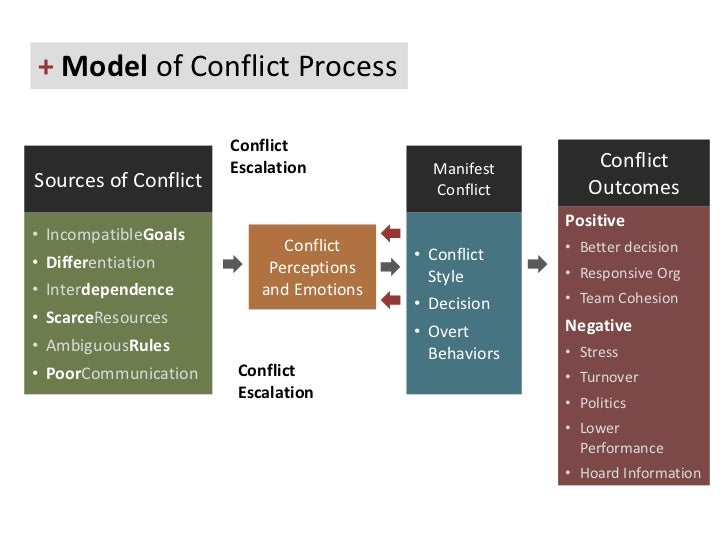
The following couples therapy exercises help to remove obstacles in the way of achieving positive outcomes in order to better understand how to ensure both partners win:
Removing relationship disturbances
Existing relationship disturbances can negatively affect finding an appropriate conflict resolution.
Ask each partner to complete the Removing Relationship Disturbances worksheet.
The exercise begins by each partner identifying existing disagreements and conflicts in their relationship and the emotional reactions that accompany them.
Couples answer the following:
- What do we disagree about?
- How do I emotionally react?
- How does my partner emotionally react?
To help with this exercise, couples can think about times when they experienced hurt, upset, anger, insecurity, and fear.
Next, they consider what they could do to remove such disturbances, being specific. What actions could resolve the problem causing these emotional reactions?
Agree to a Win–Win Mindset
Finding a better outcome to conflict requires adopting a win–win mindset. Grieger (2015) suggests rather than asking yourself, “How can I get what I want?” ask, “How can we get what we want?”
Grieger (2015) suggests rather than asking yourself, “How can I get what I want?” ask, “How can we get what we want?”
This change in approach requires a commitment from both partners to find solutions to problems that lead to mutual satisfaction.
Ask each partner to complete the Agree to a Win–Win Mindset and sign off on the following:
I, ____________________________, commit to adopting a win–win mindset where I work toward outcomes from current and future disagreements so that we both get what we want and need.
Tell them that to achieve a win–win outcome from conflicts, they need to commit to the mindset that they want to reach satisfactory results from all aspects of their relationship.
Once they have both physically signed up, put the sheet somewhere visible in the house to remind both parties that a new mindset is required throughout the relationship, now and in the future.
Listening With Purpose
To understand what a win means for the other person during conflict or a disagreement, it is essential to listen well, forming a deep understanding of their needs, hopes, fears, and wishes.
Use the Listening With Purpose worksheet to capture what winning looks like for both partners in a relationship before considering the next steps.
The couple should take some time, preferably in a place where they both feel safe and comfortable, to discuss what outcome they would like from the existing disagreement.
Without judgment and allowing each person the opportunity to talk openly, they should be able to share what they want. Remember, there is no right or wrong answer – only a true reflection of needs.
Brainstorming for Synergy
Compromise is essential in any relationship, particularly during conflict. Each partner must consider giving something up of similar value so that they meet somewhere in the middle (Grieger, 2015).
Use the Brainstorming for Synergy worksheet to encourage bouncing ideas off each other until the couple finds a win for both partners.
Capture the following:
- What is the disagreement about?
- What does a win for each person look like?
- Brainstorm ideas that could lead to mutual satisfaction.
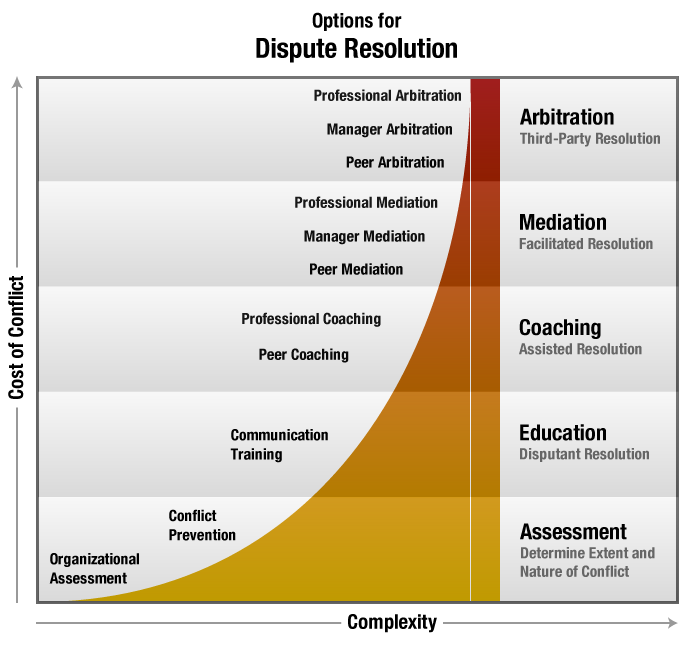
Often, resolutions to conflict and disagreement feel like a win to both parties; this is a win–win situation. The couple’s goal should be for mutual satisfaction.
Regular Couple Check-Ups
We have regular check-ups for our physical wellbeing, so why not for our relationship health? Without regular monitoring, we don’t know if we are doing things right or wrong for the relationship and avoiding unnecessary conflict.
Grieger (2015) suggests the beginning of the month is a great time to attend to the health of the relationship. Use the Regular Couple Check-Ups worksheet to take stock honestly and openly and make plans for keeping the relationship on track or shake things up a little.
Ask each partner to consider the following questions together or apart:
- What is working well in the relationship, and what should we keep doing?
- What is working okay in the relationship that we could improve?
- What are we not doing that we need to start?
- What are we not doing so well and need to stop, improve, or replace?
The check-ups must be approached with an open, win–win mindset.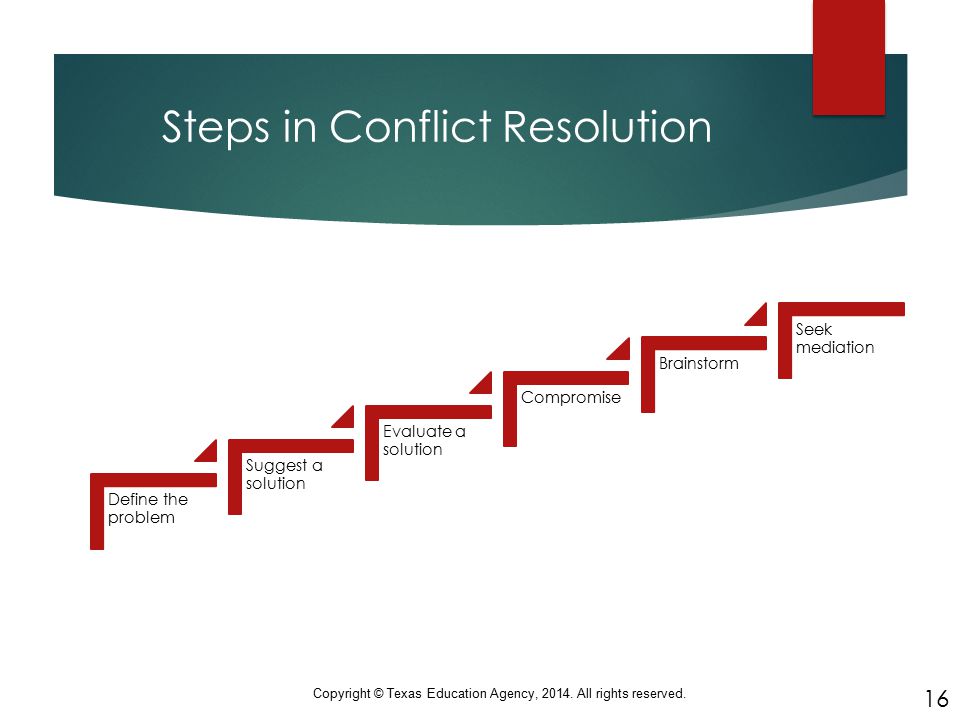 This is not an opportunity to score points, but to perform a relationship health check and move forward in a positive way.
This is not an opportunity to score points, but to perform a relationship health check and move forward in a positive way.
Resources From PositivePsychology.com
If you’re looking for more tools to help your clients strengthen their relationships, be sure to check out three of our hand-picked exercises from the Positive Psychology Toolkit©, which you can download for free in our 3 Positive Relationships Exercises Pack.
Here’s a quick snapshot of what’s included:
- Connecting with Others by Self-Disclosure
In this exercise, clients practice answering questions that require personal disclosure. With one person acting as a listener while the other speaks, it is an opportunity for clients to get comfortable with the vulnerability inherent in self-disclosure as a means to strengthen intimacy and connection. - Identifying our Expert Companions
This exercise introduces clients to the notion of an expert companion as someone who can listen and help guide them through challenging times.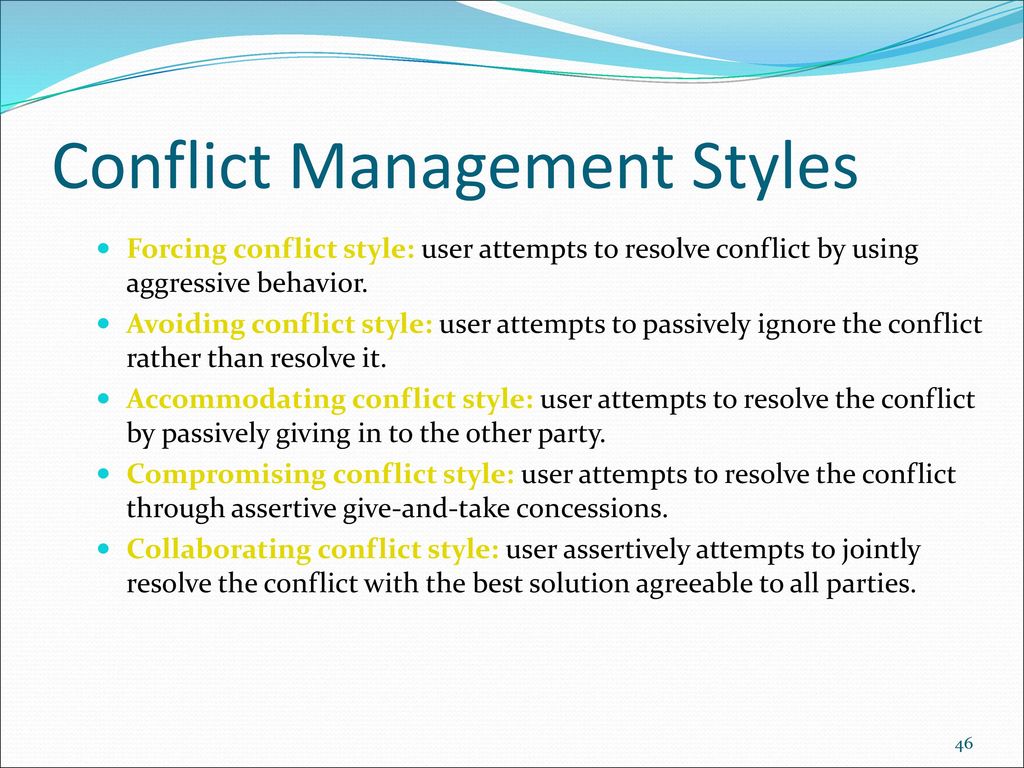 In it, clients will discover the qualities inherent in their ideal expert companion and identify someone in their life who is best suited to fill this valuable role.
In it, clients will discover the qualities inherent in their ideal expert companion and identify someone in their life who is best suited to fill this valuable role. - The Sound Relationship House Inspection
This exercise teaches couples the nine elements of the Sound Relationship House (SRH) as a metaphor for the functioning of their relationship. By having each partner rate their perception of the nine elements, couples will clarify areas of agreement and aspects of the relationship that would benefit from greater nurturing and attention.
Try out these powerful tools for yourself by downloading the exercise pack today.
Additional reading we recommend includes:
- 14 Conflict Resolution Strategies & Techniques for the Workplace
This article about conflict resolution in the workplace is a helpful additional read, especially where couples work together. Whether it is working in the family business or working from home, these can cause conflict so be sure to have a look at this article too.
A Take-Home Message
Conflict is a natural part of life. While it is not always damaging, it plays an inevitable role in every relationship.
Indeed, “all couples have disagreements. It is impossible to avoid them. It is how they handle them that will make or break their relationship” (Grieger, 2015, p. 164).
While couples should try to avoid a repeating pattern of conflict, when conflict is inevitable, they should seek a solution that leaves neither party feeling unfairly treated, hurt, or angry. If the resolution leaves one person feeling slighted or resentful, it can creep into other areas of the relationship.
A win–win outcome is most likely when we commit to fairness and listen to one another with open minds and hearts. We must use what we hear and what we already know of the other person to work together and find a solution where no one is left feeling they have lost.
While it is essential to avoid unnecessary conflict, it is helpful to develop an environment in which a couple can flourish and adopt a compassionate, trusting outlook that avoids damage or aids healing when conflict is unavoidable.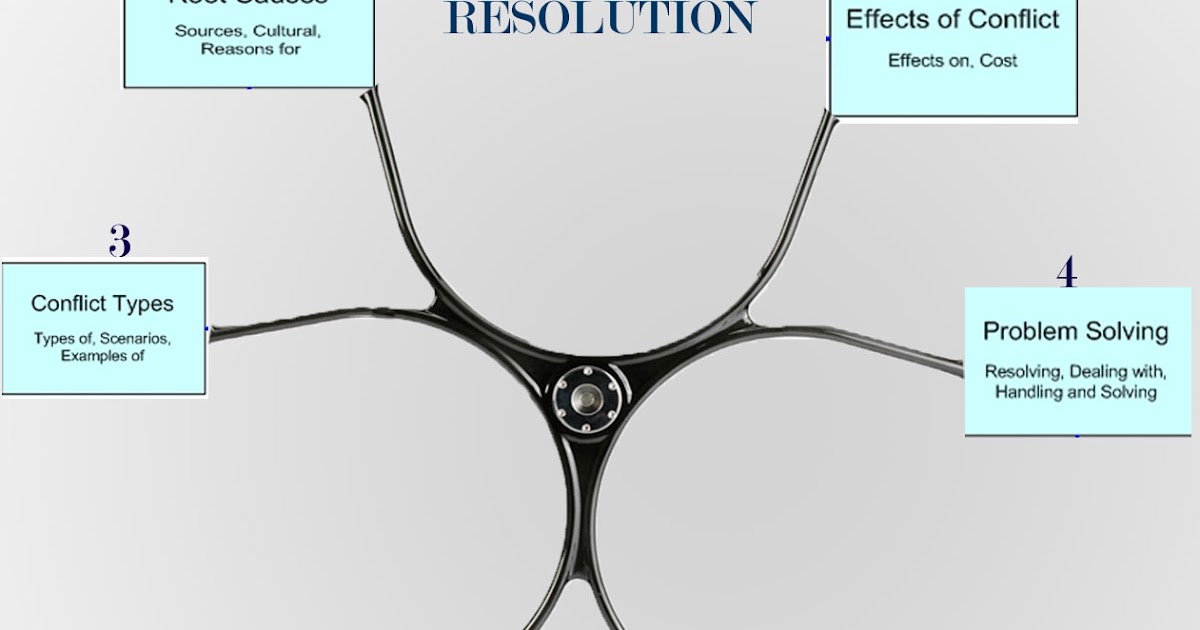
These strategies, worksheets, and exercises, teamed with the desire to grow and develop as a couple, provide a way to resolve conflict and form deeper bonds.
We hope you enjoyed reading this article. Don’t forget to download our three Positive Communication Exercises (PDF) for free.
- Caddell, J. (2013). Your best love: The couple’s workbook and guide to their best relationship. Author.
- Grieger, R. (2015). The couples therapy companion: A cognitive behavior workbook. Routledge, Taylor & Francis Group.
- Hannah, M. T., Luquet, W., Hendrix, H., Hunt, H., & Mason, R. C. (2005). Imago relationship therapy: Perspectives on theory. Jossey-Bass.
- Overall, N. C., & McNulty, J. K. (2017). What type of communication during conflict is beneficial for intimate relationships? Current Opinion in Psychology, 13, 1–5.
- Tatkin, S. (2012). Wired for love: How understanding your partner’s brain and attachment style can help you defuse conflict and build a secure relationship.
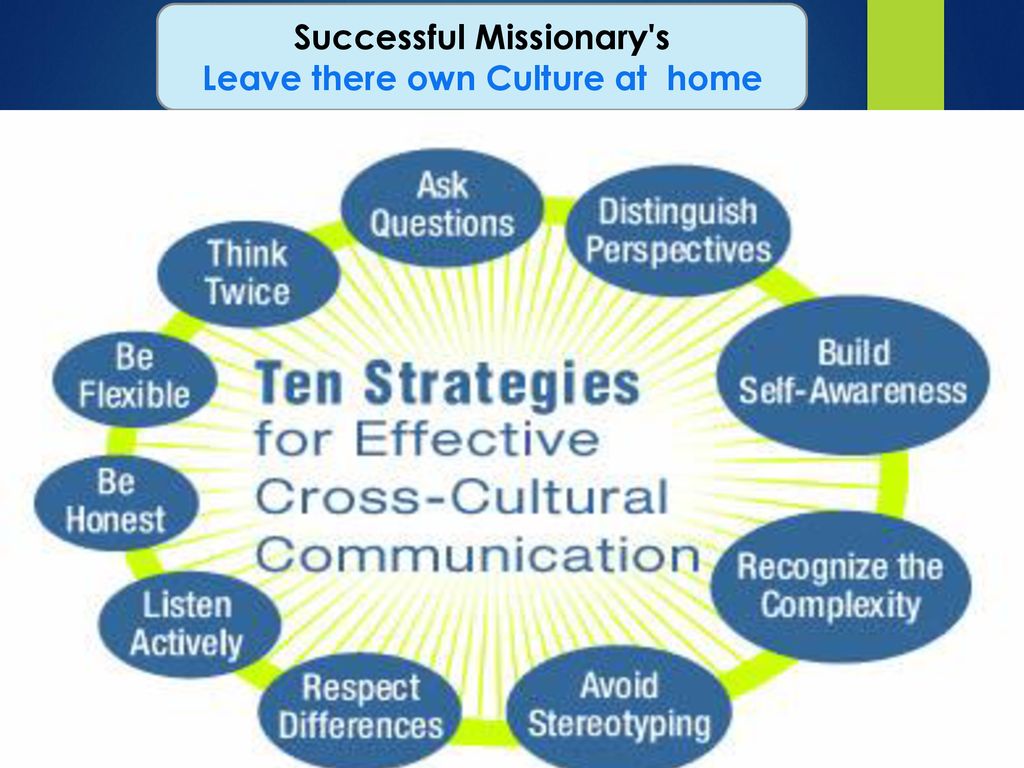 New Harbinger.
New Harbinger. - Williams, M. (2012). Couples counseling: A step by step guide for therapists. Viale.
5 effective strategies of behavior in conflict
Contents of the article
Absolutely identical people do not exist, as well as two identical fingerprints. Each person thinks in his own way, has a certain worldview, which may differ from others. Actually, this is the main causes of conflicts. Many people behave in the same way in all situations, having no idea that it is possible to choose different behavioral strategies and resolve conflicts more effectively. In this article, we will share 5 effective conflict management strategies from our free online Conflict Management course. nine0003
Rivalry
A strategy that involves defending one's own interests to the detriment of the interlocutor's interests. This means that a person is confident that he is right and wants to single-handedly win the dispute. The main actions that a person will take in a rivalry are: tight control of the opponent's behavior, pressure and the use of tricks, provocations and manipulations, unwillingness to enter into a constructive dialogue.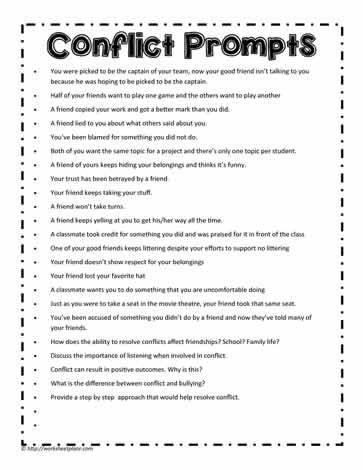 This method of conflict resolution has more disadvantages than advantages, and is not at all suitable if you want to maintain a relationship with the interlocutor. nine0003
This method of conflict resolution has more disadvantages than advantages, and is not at all suitable if you want to maintain a relationship with the interlocutor. nine0003
Adaptation
The complete opposite of the rivalry strategy, which is characterized by the unconditional acceptance of the conflicter's position. A person puts his needs and desires into the background in order to prevent a conflict situation. This is usually done by people with low self-esteem and who do not know how to defend their position. They are characterized by the following actions: agreement with the requirements of the conflicter, the absence of claims and the manifestation of flattery. This tactic may be applicable in cases where the subject of the conflict does not matter much to you and you want to maintain a constructive relationship. nine0003
Avoidance
A person tries in every possible way to avoid conflict and postpone an important decision until later. He not only shows no interest in the conflict situation, but also ignores the opponent's position.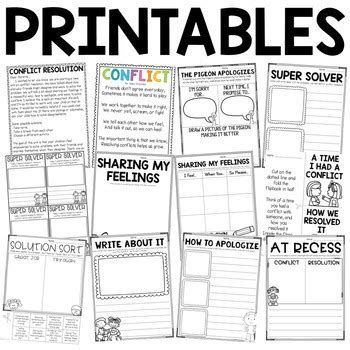 It is typical for him to defiantly leave, refuse interaction, deny the importance of the conflict, deliberately slow down the decision process, and suppress emotional reactions. Such a strategy can only be useful in one case, if you are not going to continue the relationship with your opponent. nine0003
It is typical for him to defiantly leave, refuse interaction, deny the importance of the conflict, deliberately slow down the decision process, and suppress emotional reactions. Such a strategy can only be useful in one case, if you are not going to continue the relationship with your opponent. nine0003
Compromise
A tactic in which the interests of both parties are partially satisfied. A person tries to balance positions, offer counter options, seeks to find a mutually beneficial solution. Such tactics are fair in relation to both participants in the dispute, but are not final. As a result, it is still necessary to return to the essence of the conflict and find the optimal solution.
Cooperation
The subject of the conflict seeks to resolve the situation in such a way as to fully satisfy his needs and the opponent. That is, to find a solution that will be beneficial to everyone. For such tactics, it is common to analyze the subject of the conflict, calculate the resources of the participants in order to find a common benefit, and carefully listen to the position of the interlocutor.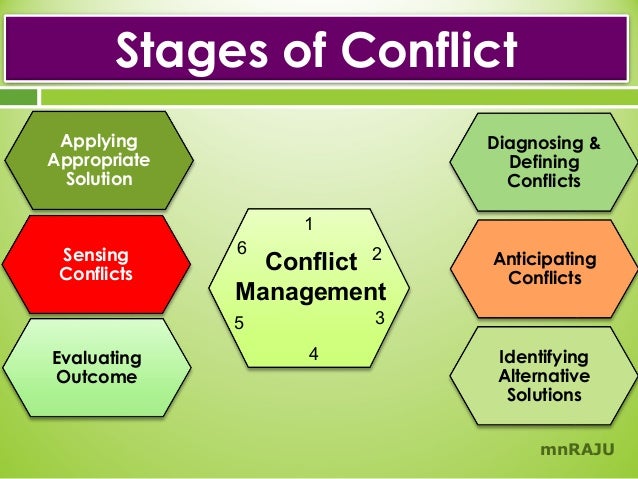 This strategy has practically the same advantages - it promotes the development of trust and long-term interpersonal relationships, making mutually beneficial decisions. But not all conflicts can fully satisfy the basic desires of each participant, in which case the principle of cooperation will only complicate the situation. nine0003
This strategy has practically the same advantages - it promotes the development of trust and long-term interpersonal relationships, making mutually beneficial decisions. But not all conflicts can fully satisfy the basic desires of each participant, in which case the principle of cooperation will only complicate the situation. nine0003
| It is difficult to find two people with exactly the same tastes, habits or interests, therefore, in any long-term relationship between people, sooner or later disagreements, contradictions, conflict situations arise. Psychologist K. Thomas classified all ways of behaving in a conflict according to two criteria: a person's desire to defend their own interests (assertiveness) and a person's desire to take into account the interests of another person (cooperation). Based on these criteria, K. Thomas identified five main ways of behaving in a conflict situation. For convenience, they can also be represented in the form of images of animals: nine0003 I Competition (competition) - "shark"; II Adaptation (settlement) - "teddy bear"; III Avoidance (avoidance) - "turtle"; IV Compromise - "fox"; V Cooperation - "owl". Each of these modes of behavior has its pros and cons, may be appropriate for one life situation, but be completely inappropriate for others. Every year, the college conducts testing to determine the leading ways of behavior in a conflict situation by K. Each student can find out his test results from the college psychologist in room 224. Below are descriptions of the strategies identified by K. Thomas, supplemented by comments from various authors. I Competition Competition is a type of behavior in a conflict in which a person seeks to achieve the satisfaction of his interests to the detriment of the interests of another. A person who follows this strategy is sure that only one participant can emerge victorious from the conflict, and the victory of one participant inevitably means the defeat of the second. Such a person will insist on his own, no matter what, and the position of another person will not be taken into account. nine0003 Pros and cons of this strategy: stubbornly defending your interests to the detriment of the interests of another person can help a person temporarily hold up in a conflict situation. However, this approach is not applicable to long-term relationships (be it friendships, relationships with a loved one, in a family, at work, etc. In the form of an image, competition is a "shark" competition. Such a strategy is characterized by a type of behavior that can be figuratively represented by the behavior of a shark at the time of the attack. This type of behavior is rigidly focused on winning, regardless of their own costs, which can be defined by the expression "rushing ahead." The preference for such behavior in a conflict is often explained by a subconscious desire to protect oneself from the pain caused by a sense of defeat, because. Tactical actions "Sharks": strictly controls the actions of the enemy and his sources of information; constantly and deliberately puts pressure on the enemy by all available means; uses deceit, cunning, trying to seize the position; provokes the enemy to ill-conceived steps and mistakes; expresses unwillingness to enter into a dialogue, as he is sure that he is right, and this confidence turns into self-confidence. Personal qualities: dominance, authoritarianism; intolerance for disagreement and dissent; focus on preserving what is; fear of innovations, ambiguous decisions; fear of criticism of one's style of behavior; using one's position with the chain of achieving power; ignoring collective opinions and assessments in decision-making in critical situations. II Fixture Adaptation is a way of behavior of a participant in a conflict in which he is ready to give up his interests and give in to another person in order to avoid confrontation. Adaptation in the form of an image - settling "teddy bear" To illustrate this strategy of behavior in a conflict, the conditional name of a soft toy is given, which, without any effort on our part, gives us a feeling of warmth and softness. - constant conciliation with the requirements of the enemy, i.e. makes maximum concessions; Personal qualities: - spinelessness - the lack of one's own opinion in difficult situations; III Avoidance Often people try to avoid discussing conflict issues and postponing difficult decisions “until later”. In the form of an image, avoidance can be represented as a "turtle" avoidance. This strategy of behavior can be compared with the behavior of a turtle, which, at the moment of danger, hides in its shell. On the other hand, such behavior may push the adversary to overstate demands or retaliate instead of participating in a joint search for solutions, and may also lead to an exorbitant increase in the problem. Quite often, conflict avoidance is consciously or unconsciously used as a punishment to force the other side to change their attitude towards the conflict. nine0003 The behavior strategy of the "Turtle" leads to the fact that the true causes are driven inside and the conflict remains, it seems to shift to another plane, it becomes deeper and more complicated. An unresolved conflict is dangerous because it affects the subconscious and manifests itself in the growth of resistance in various areas, including diseases. Tactical actions "Turtle": - refuses to enter into a dialogue, using the tactics of demonstrative withdrawal; avoids the use of force; ignores all information from the enemy, does not trust the facts and does not collect them; denies the seriousness and acuteness of the conflict; systematically slows down in making decisions, always late, as he is afraid to make a reciprocal move. This is a situation of missed opportunities. nine0033 Personality traits: - shyness in dealing with people; - impatience for criticism; - accepting it as an attack on oneself personally; - indecision in critical situations, acts according to the principle: "Maybe it will cost"; inability to prevent chaos and pointlessness in the conversation. IV Compromise Compromise is the partial satisfaction of the interests of both sides of the conflict. In the form of an image, a compromise is a "fox". This strategy is characterized by a type of fox behavior that combines caution and cunning. "Fox" operates on the principle: "I will give in a little if you are also ready to give in." Balance, balance and caution are the main attitudes of this type of behavior. For this strategy, both personal chains and relationships are equally significant. The desire to normalize relations in any case is the weak point of this strategy in the conflict with the Shark. The compromise strategy does not involve an analysis of the amount of information, the "Fox" tolerates an exchange of views, but feels uncomfortable, because. Personal qualities: - extreme caution in assessment, criticism, accusations, combined with openness. Such qualities are undoubtedly an element of the high culture of the individual; wary of critical assessments of other people; expectation of soft formulations, beautiful words; the desire to convince people not to express their thoughts too harshly and openly. nine0003 V Cooperation When choosing this strategy, the participant seeks to resolve the conflict in such a way that everyone wins. He not only takes into account the position of the other participant, but also seeks to ensure that the other side is also satisfied. In the form of an image, cooperation is an "owl". This strategy of behavior in conflict can be conditionally given the name of a bird, to which people have long attributed such qualities as wisdom and common sense. "Owl" openly recognizes the conflict, presents its interests, expresses its position and offers ways out of the conflict. He expects reciprocal cooperation from the enemy. The main principle of this strategy: "Let's leave mutual insults, I prefer . |
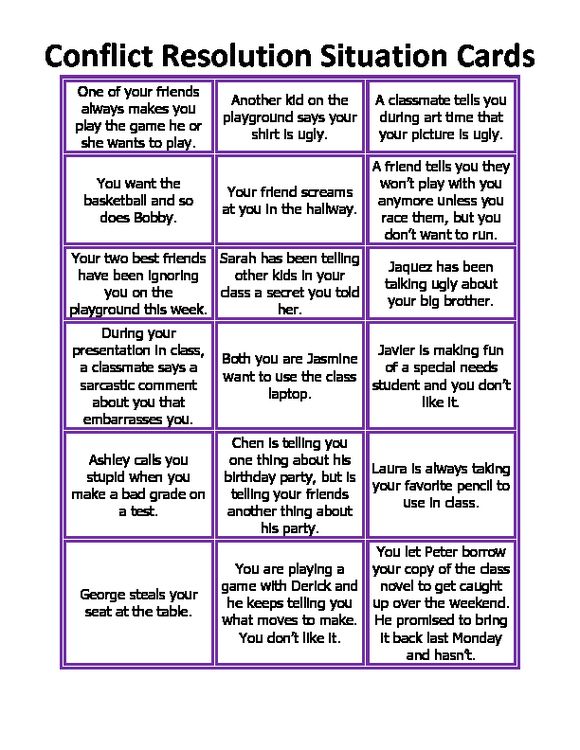 As a rule, a person in a conflict situation behaves in the only way that is familiar to him, and is not aware of the existence of other ways of behavior.
As a rule, a person in a conflict situation behaves in the only way that is familiar to him, and is not aware of the existence of other ways of behavior. 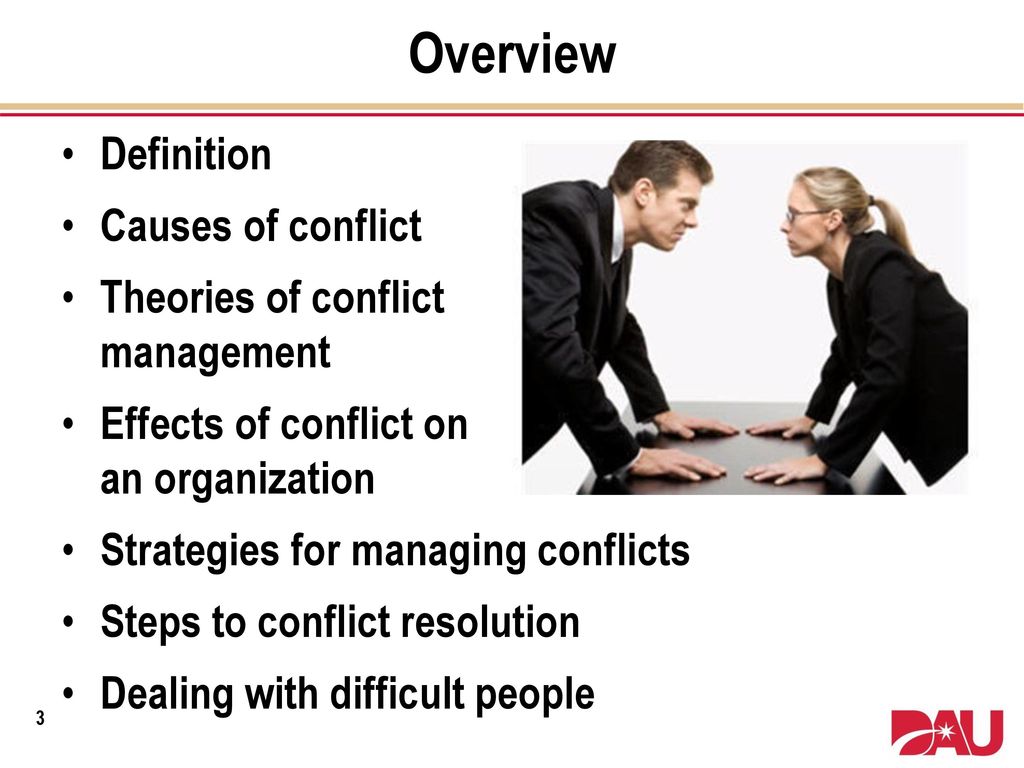 Thomas. nine0003
Thomas. nine0003 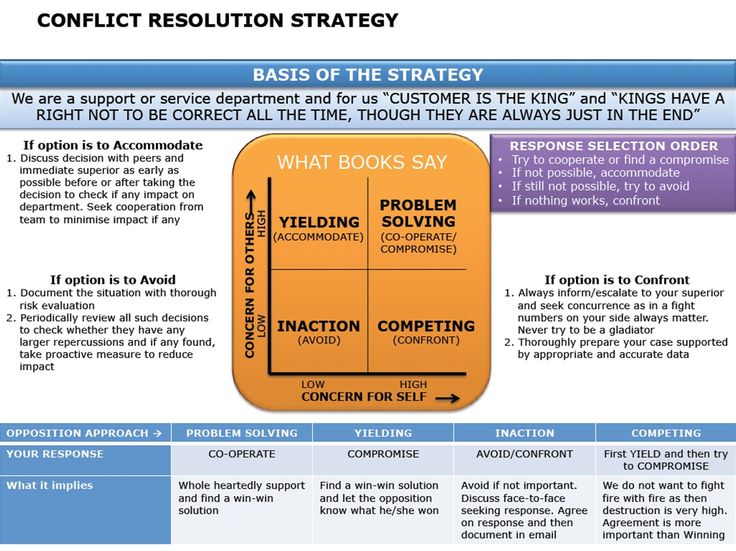 ). Long-term relationships can only be sustainable if the wishes and interests of all participants are taken into account, and the loss of one person, as a rule, means the loss of all. In a long-term relationship, only elements of competition are possible, provided that it is carried out fairly and according to predetermined rules and its results do not have a strong influence on the relationship between its participants. In this case, competition can help spice things up and get people more actively pursuing their goals. nine0003
). Long-term relationships can only be sustainable if the wishes and interests of all participants are taken into account, and the loss of one person, as a rule, means the loss of all. In a long-term relationship, only elements of competition are possible, provided that it is carried out fairly and according to predetermined rules and its results do not have a strong influence on the relationship between its participants. In this case, competition can help spice things up and get people more actively pursuing their goals. nine0003  this strategy reflects a form of power struggle in which one side emerges as the clear winner. This strategy is necessary if a certain person, denounced by authority, must restore order for the sake of the general welfare. It is certainly justified if someone takes control into their own hands in order to protect people from violence or rash acts. However, the Shark's strategy of behavior rarely brings long-term results - the losing side may not support a decision made against its will, or even try to sabotage it. The one who lost today may refuse to cooperate tomorrow. nine0003
this strategy reflects a form of power struggle in which one side emerges as the clear winner. This strategy is necessary if a certain person, denounced by authority, must restore order for the sake of the general welfare. It is certainly justified if someone takes control into their own hands in order to protect people from violence or rash acts. However, the Shark's strategy of behavior rarely brings long-term results - the losing side may not support a decision made against its will, or even try to sabotage it. The one who lost today may refuse to cooperate tomorrow. nine0003 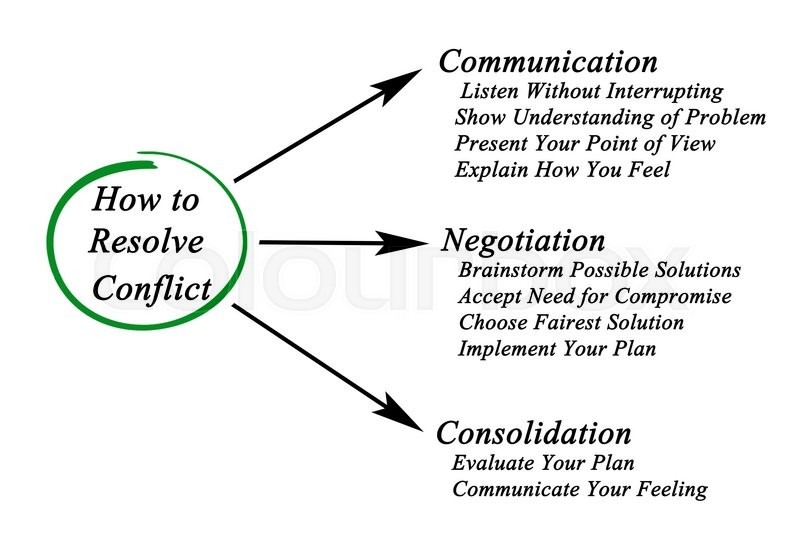 When confronted with this type of behavior in a conflict, one must remember that "Shark" is afraid when information is collected about her, and tries to block all information sources about herself, and also does not want and is afraid of an open discussion of the conflict problem, since she is not interested in it, for her, only her position is important. When entering into a conflict process, she prefers that others avoid or resolve conflicts. nine0003
When confronted with this type of behavior in a conflict, one must remember that "Shark" is afraid when information is collected about her, and tries to block all information sources about herself, and also does not want and is afraid of an open discussion of the conflict problem, since she is not interested in it, for her, only her position is important. When entering into a conflict process, she prefers that others avoid or resolve conflicts. nine0003 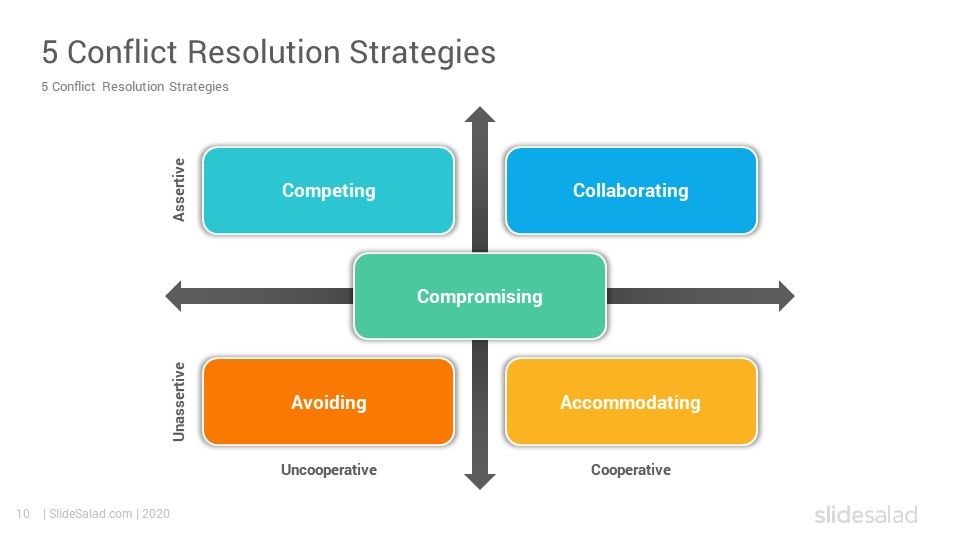 This position can be taken by people with low self-esteem who believe that their goals and interests should not be taken into account. nine0033 The pros and cons of this strategy: if the subject of the dispute is not so important, but it is more important to maintain a good relationship with another person, then giving in, letting him assert himself in this way may be the most appropriate behavior. But if the conflict is about important issues that affect the feelings of the participants in the dispute, then such a strategy cannot be called productive. Its result will be the negative emotions of the yielding side (anger, resentment, disappointment, etc.), and in the long term, the loss of trust, respect and understanding between the participants. nine0003
This position can be taken by people with low self-esteem who believe that their goals and interests should not be taken into account. nine0033 The pros and cons of this strategy: if the subject of the dispute is not so important, but it is more important to maintain a good relationship with another person, then giving in, letting him assert himself in this way may be the most appropriate behavior. But if the conflict is about important issues that affect the feelings of the participants in the dispute, then such a strategy cannot be called productive. Its result will be the negative emotions of the yielding side (anger, resentment, disappointment, etc.), and in the long term, the loss of trust, respect and understanding between the participants. nine0003 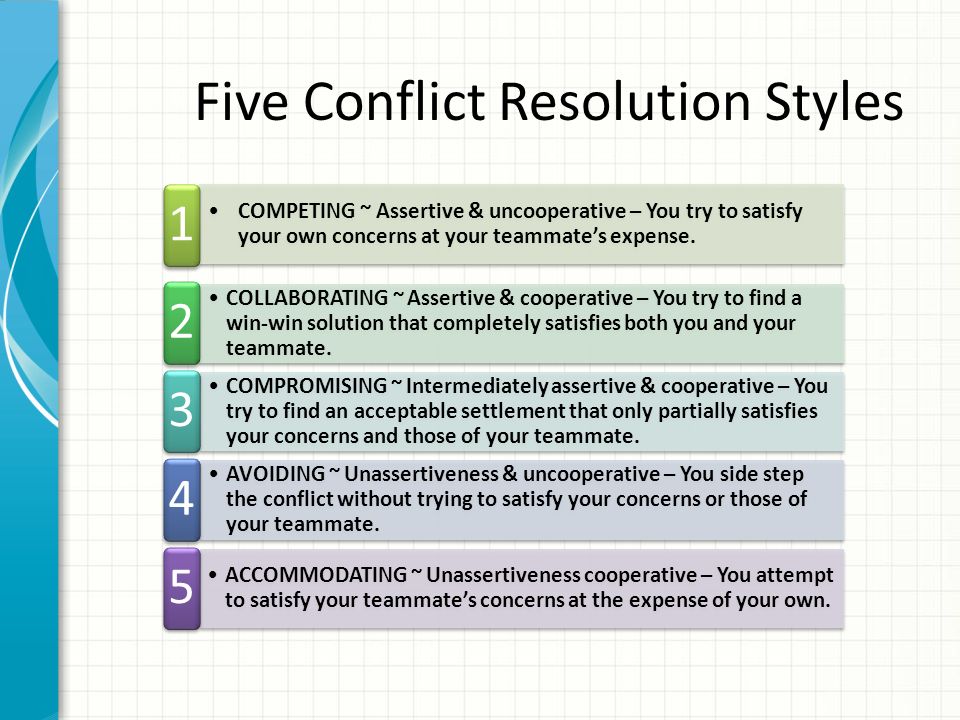 The conflict resolution strategy is aimed at the maximum in relationships and the minimum in comprehending personal chains. The basic principle of behavior: "Whatever you want - just let's live together." This is a setting for benevolence at the expense of one's own losses, the so-called "hide and seek", but, of course, to a certain limit, since the instinct of self-preservation is highly developed in all people. Often such a strategy is followed by altruists, sometimes outwardly, and sometimes out of conviction. The ratio of forces of opponents is important here. If the balance of forces is not in his favor and further struggle does not make sense, then there is a reorientation to the installation, the motto of which is: "I surrender to the mercy of the winner." A reconciliation strategy can be a smart move if a confrontation over a minor disagreement would be putting undue stress on the relationship at this stage, or if the other side is not ready for dialogue. There are times when you need to maintain good relations.
The conflict resolution strategy is aimed at the maximum in relationships and the minimum in comprehending personal chains. The basic principle of behavior: "Whatever you want - just let's live together." This is a setting for benevolence at the expense of one's own losses, the so-called "hide and seek", but, of course, to a certain limit, since the instinct of self-preservation is highly developed in all people. Often such a strategy is followed by altruists, sometimes outwardly, and sometimes out of conviction. The ratio of forces of opponents is important here. If the balance of forces is not in his favor and further struggle does not make sense, then there is a reorientation to the installation, the motto of which is: "I surrender to the mercy of the winner." A reconciliation strategy can be a smart move if a confrontation over a minor disagreement would be putting undue stress on the relationship at this stage, or if the other side is not ready for dialogue. There are times when you need to maintain good relations.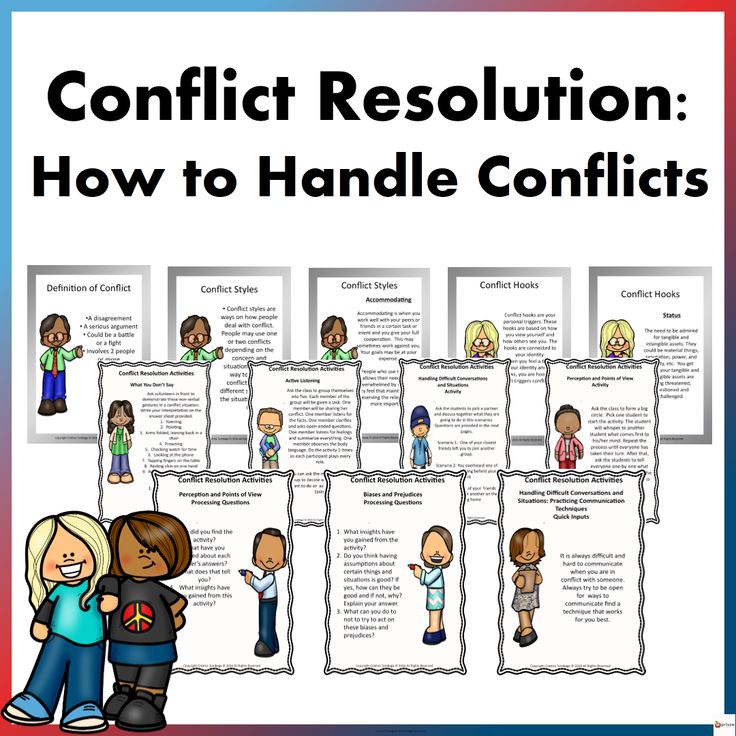 Conflicts are sometimes resolved by themselves only due to the fact that we continue to maintain friendly relations. In the case of a serious conflict, the behavioral strategy of the "Teddy Bear" leads to the fact that the main controversial issues are not addressed and the conflict remains unresolved. nine0033 Teddy Bear tactical actions:
Conflicts are sometimes resolved by themselves only due to the fact that we continue to maintain friendly relations. In the case of a serious conflict, the behavioral strategy of the "Teddy Bear" leads to the fact that the main controversial issues are not addressed and the conflict remains unresolved. nine0033 Teddy Bear tactical actions: 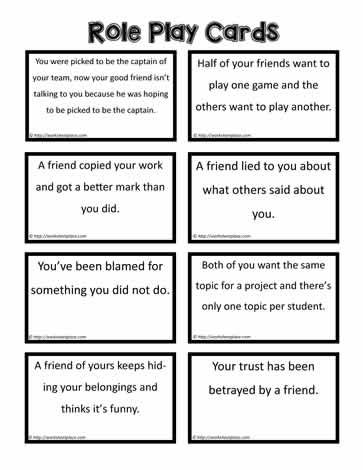 In this case, a person does not defend his own interests, but at the same time does not take into account the interests of others.
In this case, a person does not defend his own interests, but at the same time does not take into account the interests of others. 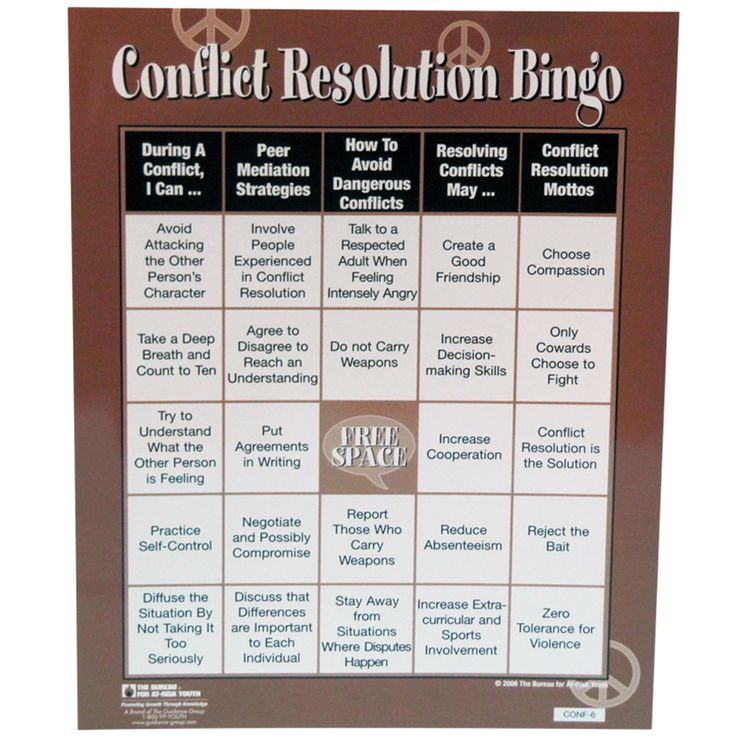 The Turtles' tactical motto is "Leave me some and don't touch me." This is a passive-passive attitude of the victim, drawn into the conflict by circumstances. The position of the victim is attractive due to certain compensatory factors: the victim receives significant outside support; she has a lot of sympathy; she doesn't have to try to solve the problem herself. Behind the seeming helplessness, there may be a feeling that the problem is becoming more desirable and enjoyable than the risks and difficulties associated with its solution. If the victim faces violence or tangible loss, she may rate the risk associated with changing her situation as unacceptably high. The tragedy of this role and the inability to get out of it lies in the deep-rooted attitude of helplessness and inability to change the environment. What causes these settings? Victims learn how to be victims from other victims. Parents teach this to their children; authoritarian parents, teachers, leaders, and social systems intimidate people into accepting the role of victims.
The Turtles' tactical motto is "Leave me some and don't touch me." This is a passive-passive attitude of the victim, drawn into the conflict by circumstances. The position of the victim is attractive due to certain compensatory factors: the victim receives significant outside support; she has a lot of sympathy; she doesn't have to try to solve the problem herself. Behind the seeming helplessness, there may be a feeling that the problem is becoming more desirable and enjoyable than the risks and difficulties associated with its solution. If the victim faces violence or tangible loss, she may rate the risk associated with changing her situation as unacceptably high. The tragedy of this role and the inability to get out of it lies in the deep-rooted attitude of helplessness and inability to change the environment. What causes these settings? Victims learn how to be victims from other victims. Parents teach this to their children; authoritarian parents, teachers, leaders, and social systems intimidate people into accepting the role of victims.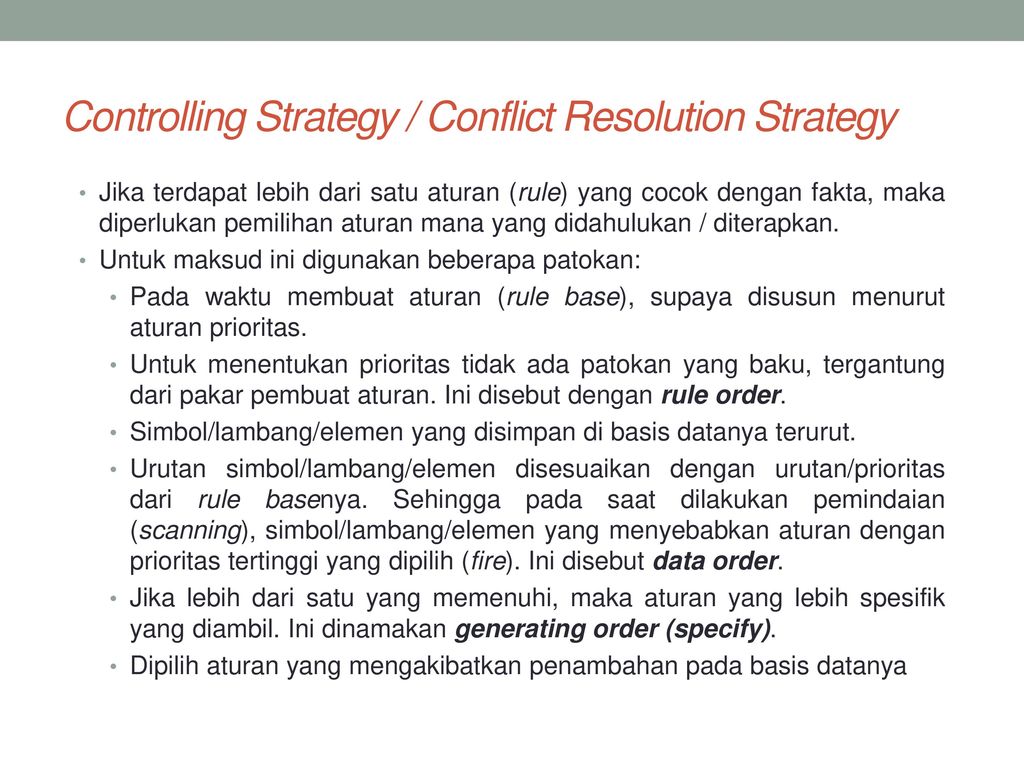 In some cases, over-cautious habits gradually lead people into the role of victim, as people refuse to go to change the situation or themselves, although with the right approach they could bring about positive changes relatively easily. nine0033 The Turtle's behavioral strategy may, however, be a completely reasonable step if the conflict does not affect the direct interests of the person or involvement in it does not affect his development. Such a step can also be useful if it draws attention to a running problem.
In some cases, over-cautious habits gradually lead people into the role of victim, as people refuse to go to change the situation or themselves, although with the right approach they could bring about positive changes relatively easily. nine0033 The Turtle's behavioral strategy may, however, be a completely reasonable step if the conflict does not affect the direct interests of the person or involvement in it does not affect his development. Such a step can also be useful if it draws attention to a running problem. 